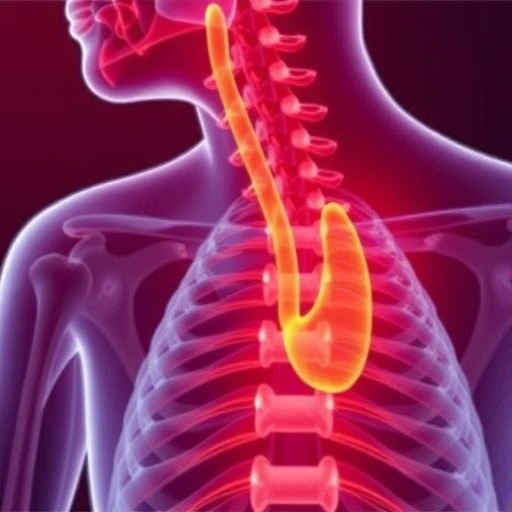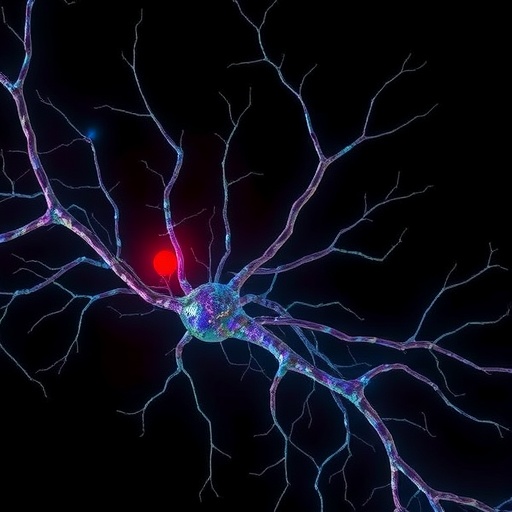In a groundbreaking study published in Nature Communications, researchers have unveiled a comprehensive analysis of the social exposome and its profound effects on brain health and dementia outcomes across Latin America. This pioneering work offers an unprecedented look at how the complex interplay of social, environmental, and economic factors shapes neurodegenerative disease risk in a region characterized by diverse demographics and varying levels of development. Through advanced epidemiological methods and innovative data integration, the team sheds light on the intricate pathways that link social determinants to dementia, challenging previously held notions that primarily focused on biological and genetic contributors.
The concept of the “social exposome” extends the traditional exposome framework, which encompasses all environmental exposures throughout a person’s life, by emphasizing the social dimensions that influence health trajectories. This includes factors such as education, socioeconomic status, cultural context, and access to healthcare services. In Latin America, where disparities in social determinants are pronounced and often compounded by rapid urbanization and economic transitions, understanding these relationships is crucial for targeted public health interventions. The researchers meticulously catalogued a variety of social exposures and contextual stressors, revealing how cumulative social disadvantage correlates with accelerated cognitive decline.
Utilizing a robust cohort representative of multiple countries within the Latin American region, the investigators combined large-scale population data with neuropsychological assessments and biomarker analyses. This integrative approach allowed for a multidimensional capture of both social and biological variables, enabling more precise modeling of dementia risk. Importantly, the study accounted for confounders such as age, sex, genetic predisposition including APOE genotypes, and baseline cognitive function, ensuring that the resultant associations were both statistically and clinically meaningful. These intricate analyses highlight that social exposures are not just correlates but potential drivers of neurological deterioration.
One of the hallmark findings of the study is the identification of cumulative social stressors – such as chronic poverty, exposure to violence, and limited social support – as significant predictors of brain atrophy and cognitive impairment. The researchers hypothesize that chronic activation of stress-response systems, driven by adverse social conditions, leads to neuroinflammation and vascular damage, thereby accelerating neurodegeneration. This links the social exposome directly to pathophysiological mechanisms underlying dementia. In doing so, the study bridges a critical gap between epidemiology and neuroscience, providing a biological rationale for social determinants as integral components of dementia etiology.
Exploring regional differences within Latin America, the study reveals heterogeneity in dementia prevalence and severity that aligns closely with local socio-environmental contexts. For example, communities experiencing systemic marginalization due to ethnic minority status or geographic isolation exhibited disproportionately poor brain health outcomes. These data underscore the necessity of context-specific health policies that address localized social determinants rather than relying on uniform national strategies. This granular insight highlights the importance of incorporating sociocultural factors when designing dementia prevention and care programs in heterogeneous populations.
In addition to observational findings, the study employed advanced machine learning algorithms to detect complex, nonlinear interactions between social exposures and brain health indicators. These techniques unveiled critical exposure patterns that traditional statistical models might miss. For instance, specific combinations of limited education, unstable housing, and occupational hazards showed synergistic effects on cognitive decline, emphasizing the multidimensional nature of the social exposome. This methodological innovation demonstrates the increasing role of computational tools in untangling the convoluted web of factors that influence dementia risk.
Crucially, the research moves beyond merely documenting disparities, proposing mechanistic pathways by which social environments could influence neurobiological processes. Chronic psychosocial stress is postulated to exert its effects through sustained activation of the hypothalamic-pituitary-adrenal (HPA) axis, leading to elevated cortisol levels which can compromise hippocampal integrity—a brain region critical for memory formation. Moreover, social isolation is linked to reduced neural plasticity and impaired synaptic function, further exacerbating cognitive decline. These insights provide a foundation for interventional strategies aimed at mitigating the physiological consequences of adverse social conditions.
The implications of this study for public health policy and clinical practice are profound. By framing dementia within a social exposome model, it becomes evident that purely biomedical interventions may be insufficient. Addressing social determinants—such as improving education accessibility, enhancing social support networks, reducing economic inequality, and mitigating exposure to violence—emerges as an indispensable part of dementia prevention. This paradigm shift calls for interdisciplinary collaboration, integrating social science, neuroscience, public policy, and community engagement to formulate comprehensive strategies that transcend traditional healthcare boundaries.
The researchers advocate for the incorporation of social exposome metrics into routine population health surveillance and clinical risk assessments. Improved data collection methods, including the use of digital technologies and geospatial analytics, could facilitate real-time monitoring of social exposures at individual and community levels. These advances would enable early identification of at-risk populations and tailored interventions designed to buffer detrimental social influences. Furthermore, such data could inform the allocation of resources in a more equitable fashion, ultimately reducing dementia burden in vulnerable Latin American populations.
This study also raises critical questions regarding the generalizability of dementia risk factors derived primarily from high-income countries. The distinct social and environmental landscapes in Latin America necessitate region-specific models that incorporate cultural nuances and indigenous knowledge. The authors highlight the importance of building local research capacity and fostering community partnerships to generate data reflective of the lived experiences of diverse populations. Such efforts are pivotal in closing the knowledge gap and ensuring that interventions are both effective and culturally sensitive.
On a technical front, the study’s integration of multi-omic data—including genomics, epigenomics, and metabolomics—with social data represents a pioneering effort to dissect the biological underpinnings of social determinants. This holistic approach enables identification of molecular signatures associated with social adversity, revealing epigenetic modifications and altered metabolic pathways that may serve as biomarkers or therapeutic targets. The capability to link social environments to molecular changes opens exciting avenues for precision medicine in neurodegenerative diseases, customized according to individuals’ socio-environmental contexts.
The investigators also emphasize the dynamic nature of the social exposome, recognizing that exposures are not static but evolve over a lifespan. Longitudinal analyses within the cohort demonstrated how changes in socioeconomic status, migration patterns, or social networks impact cognitive trajectories over time. Such temporal resolution is critical for distinguishing between early-life exposures that set disease risks and later-life social factors that modify progression. This temporal complexity is a key consideration for designing effective interventions and underscores the need for continuous monitoring.
Importantly, the ethical dimensions of social exposome research are thoughtfully addressed. The authors call attention to the risks of stigmatization or victim-blaming when linking social adversity to disease outcomes. They advocate for framing findings in a manner that emphasizes systemic factors and structural inequalities rather than individual failings. Respecting participants’ autonomy, ensuring community consent, and maintaining transparency in data use are cornerstones of their ethical framework. These considerations are essential for fostering trust and promoting equitable research partnerships.
The study’s findings resonate beyond the borders of Latin America, offering insights applicable to global dementia research. As aging populations grow worldwide, especially in low- and middle-income countries, understanding the social determinants that shape neurodegenerative disease trajectories is increasingly urgent. This research adds momentum to a global movement that redefines health as a product of social and environmental collective experiences, rather than a solely biological phenomenon. It challenges scientists and policymakers alike to adopt more holistic, integrative perspectives on brain health.
In conclusion, the elucidation of the social exposome’s role in dementia outcomes represents a paradigm shift with far-reaching implications. By connecting social disadvantage to neurobiological mechanisms, this landmark study opens new frontiers for prevention, diagnosis, and treatment of dementia in Latin America and beyond. The study’s comprehensive, multidimensional approach serves as a template for future research aiming to unravel the complex fabric of social and biological factors governing brain health. Ultimately, these findings inspire hope for more equitable, effective solutions to combat the global dementia epidemic.
Subject of Research: Social exposome and brain health outcomes of dementia across Latin America
Article Title: Social exposome and brain health outcomes of dementia across Latin America
Article References:
Migeot, J., Pina-Escudero, S.D., Hernandez, H. et al. Social exposome and brain health outcomes of dementia across Latin America.
Nat Commun 16, 8196 (2025). https://doi.org/10.1038/s41467-025-63277-6
Image Credits: AI Generated





